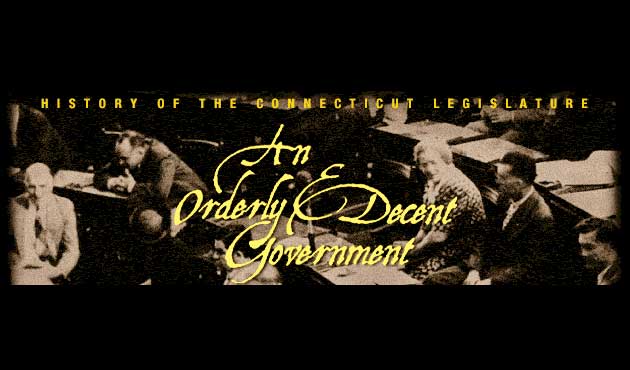
Party chairmen: Republican A. Searle Pinney and Democrat John Bailey, 1965
Connecticut experienced a political revolution in the 1960s. After federal courts ruled that town-based representation in the General Assembly was unconstitutional, the General Assembly called a Constitutional Convention in 1965 to give Connecticut government a democratic overhaul. In organizing legislative districts on the basis of population, the convention finally put Connecticut government on a modern footing.
The appearance of true representative government marked the end for “power brokers” like John Bailey. Powerful leaders from within the legislature itself emerged and quickly moved to expand their authority.
In 1969, legislative leaders of both parties introduced the Legislative Management Act to establish professional support staff and control the operating budget of the Assembly. When Governor Dempsey vetoed the bill, both houses voted unanimously to override his veto, and the General Assembly emerged as a co-equal branch of government. No longer would legislators depend on executive agencies for information or rely on party leaders for direction.

Demonstrators at an anti-income tax rally at the Capitol, 1991
The General Assembly’s new powers were soon put to the test by a wave of social and economic problems. Riots erupted in Connecticut’s declining cities in the 60s, underscoring the division of the state into “two Connecticuts,” one white, suburban and affluent, the other minority, urban and poor. Issues of equal opportunity, educational equity, and welfare reform dominated legislative agendas in session after session.
Economic recession in the late 1980s intensified long-standing debates over the adequacy and fairness of state financing. Finally, in a historic session in 1991, the General Assembly adopted a state income tax and offered a Constitutional cap on state spending to the voters.
This article is a panel reproduction from An Orderly and Decent Government, an exhibition on the history of representative government in Connecticut developed by Connecticut Humanities and put on display in the Capitol concourse of the Legislative Office Building, Hartford, Connecticut.
<< Previous – Home – Next >>








